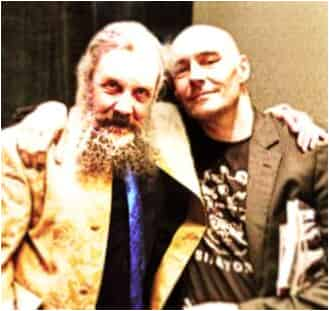
Grant Morrison
Ideas floating in the air– Part II
A discussion took place on the web about Alan Moore having “borrowed” for a Superman story that was allegedly inspired by Grant Morrison’s Superfolks series. The author of this piece theorizes that Alan Moore may have unconsciously drawn from ideas that had struck him many years before (“Alan Moore and Superfolks Part 2: The Case for the Defence,” comcisbeat.com, November 11, 2012). In our story, “World’s Best Friends,” Benson makes a comment about his father’s upcoming death. It was only months after writing the story that we remembered that the inspiration for that conversation came from a short story in Daniel Poliquin’s collection, Le Canon des Gobelins.
Keeping from Spiraling Out of Control
In a harsh critique published a few months ago, Graeme McMillan accused some of the US’s great contemporary comic-book writers of causing the stagnation of the industry: “For an industry that feeds on its own past to go 20 years without fresh characters or concepts is death. The most telling sections in ‘Leaping Tall Buildings’ are thus those written about industry powers like Brian Michael Bendis, Joe Quesada, Grant Morrison and Dan DiDio. These are the men most responsible for the failure of the big publishers to take advantage of the public’s obvious fascination with men in capes (“The Four Men Who Have Destroyed the Superhero Comic Industry,” www.newsarama.com, May 30, 2012).
Is this a problem with the authors or with publishers that want to create events? Chris Sims points out two major problems in his analysis of comic-book evolution since the 1990s. First, there is the increased power of collections, which puts pressure on the first issue of any series, regardless of its future development or artistic qualities. Then, publicity events have turned out to be counterproductive. Sims cites the example of the “death” of Superman: “DC’s bright idea of ‘killing’ Superman, which produced one of the best-selling comics of the modern era. In retrospect, it’s pretty clear to me that this was probably a terrible idea—and not just because it was a story where Superman and a giant bone monster in green bike shorts punched each other to death. It’s great that they sold a million comics and bought Dan Jurgens a solid gold statue of Booster Gold or whatever, but they also had a truly massive amount of media coverage that told people that Superman was dead, and lured them into a shop where they bought a comic that — if they bothered to actually pop open the polybag and read it—ended with Lois Lane cradling Superman’s lifeless body. In real life—in most fiction—that tends to be the end of things. They told the biggest potential audience they had ever had that Superman was dead. Dead. Which, to rational people who are not familiar with how comic books work, means “there will be no more Superman stories so it is completely unnecessary for you to ever return to this shop and buy another one of these” (“What’s Up With the 90s,” www.comicsalliance.com, July 27, 2012).


